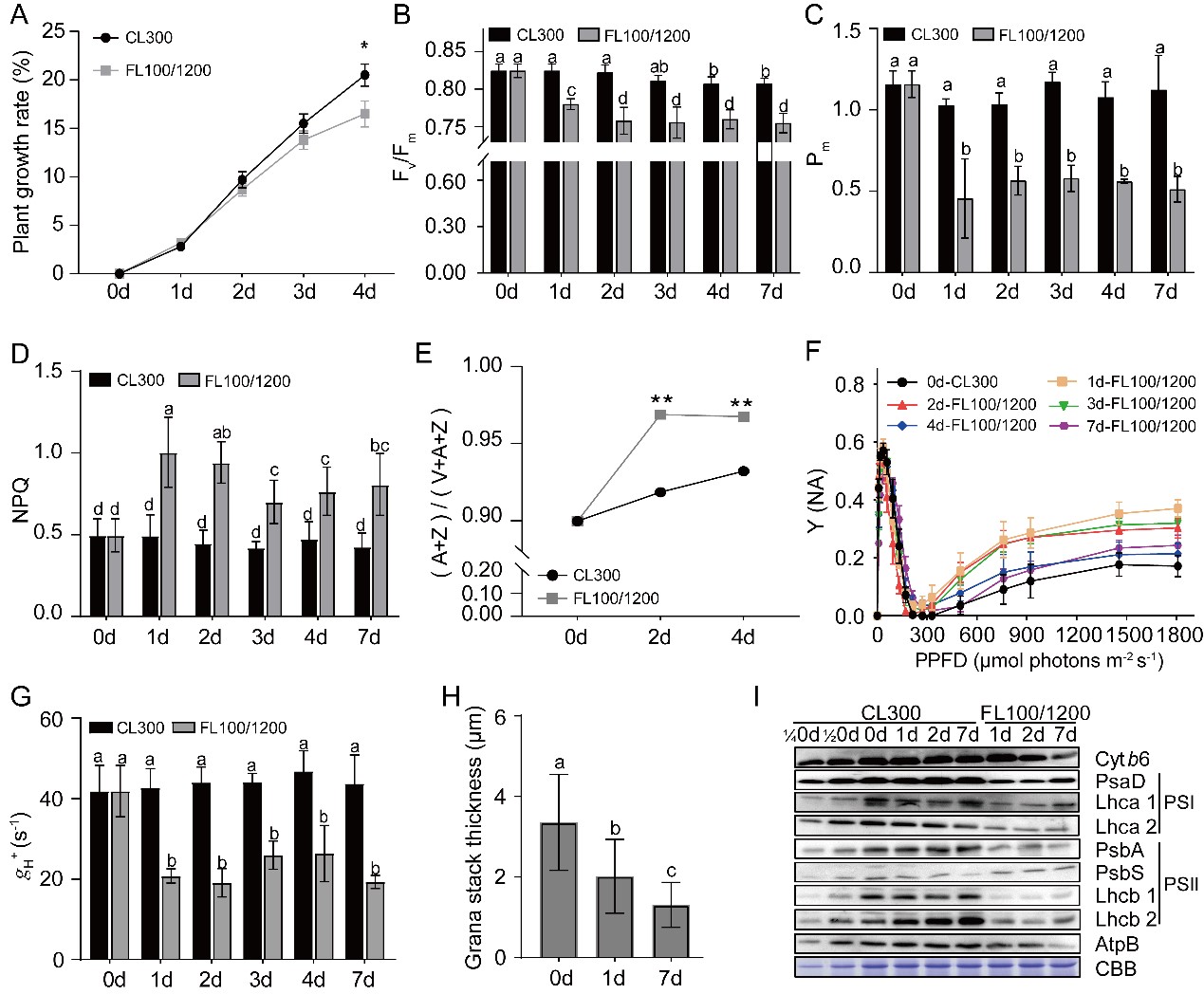Leaf photosynthetic and anatomical insights into mechanisms of acclimation in rice in response to long-term fluctuating light
Ze Wei, Fengying Duan, Xuezhen Sun, Xianliang Song, Wenbin Zhou
Plant, Cell & Environment, 20 November 2020, IF: 6.362
doi: 10.1111/pce.13954
https://onlinelibrary.wiley.com/doi/abs/10.1111/pce.13954
Abstract
Long-term fluctuating light (FL) conditions are very common in natural environments. The physiological and biochemical mechanisms for acclimation to FL differ between species. However, most of the current conclusions regarding acclimation to FL were made based on studies in algae or Arabidopsis thaliana. It is still unclear how rice (Oryza sativa L.) integrate multiple physiological changes to acclimate to long-term FL. In this study, we found that rice growth was repressed under long-term FL. By systematically measuring phenotypes and physiological parameters, we revealed that: 1) under short-term FL photosystem I (PSI) was inhibited, while after 1–7 days of long-term FL, both PSI and PSII were inhibited. Higher acceptor-side limitation in electron transport and higher overall non-photochemical quenching (NPQ) explained the lower efficiencies of PSI and PSII, respectively. 2) An increase in pH differences across the thylakoid membrane and a decrease in thylakoid proton conductivity revealed a reduction of ATP synthase activity. 3) Using electron microscopy, we showed a decrease in membrane stacking and stomatal opening after 7 days of FL treatment. Taken together, our results show that electron flow, ATP synthase activity and NPQ regulation are the major processes determining the growth performance of rice under long-term FL conditions.





